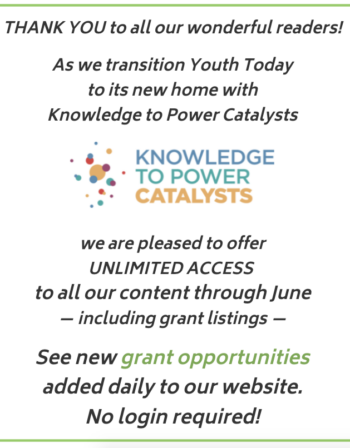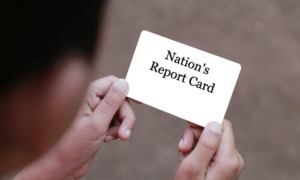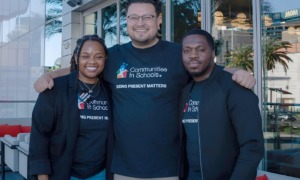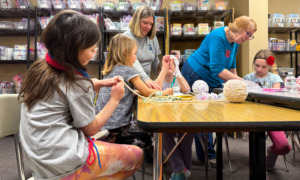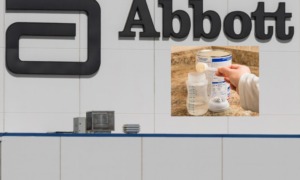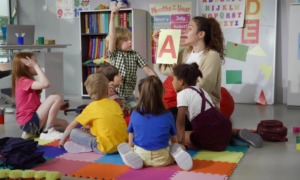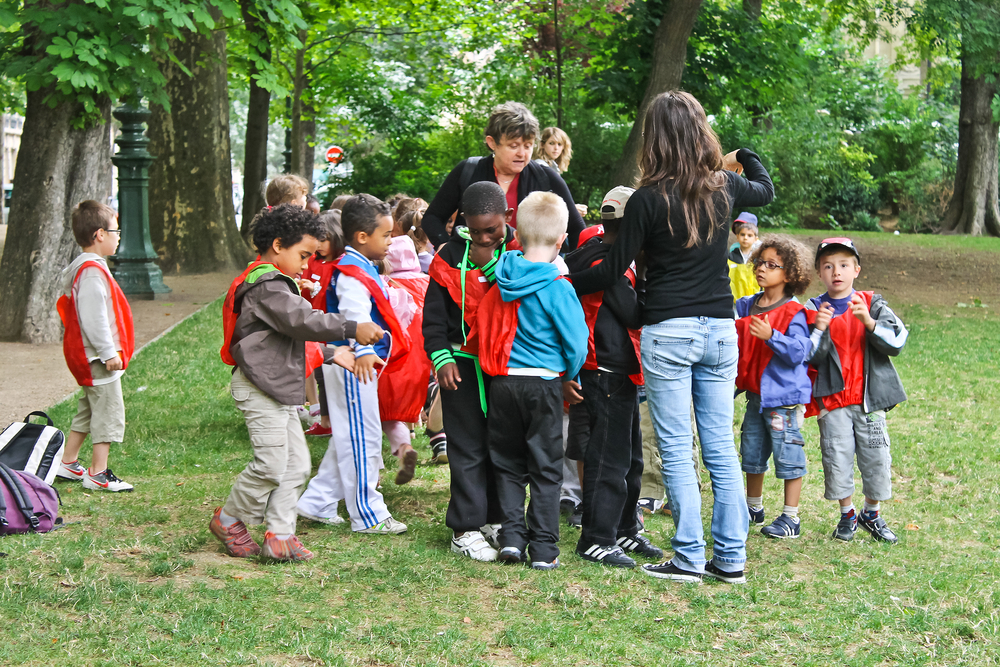
Nick_Nick/Shutterstock
.
Many of you are well-versed in the fields of education, parks and recreation, and other sectors that serve children. I hope to add a tool to your toolbox. People who work with children can never have too many devices when trying to open the locked doors of opportunities to help our children succeed.
Communities need to work together collaboratively to enhance the quality of extended-learning programs. For consistency, I mean by extended learning all programs outside the traditional school day.
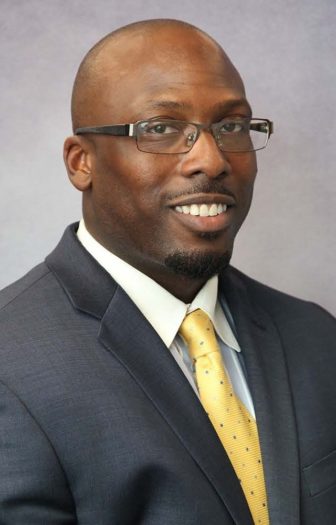
Daryle Rodgers
I have worked in education as a teacher, building administrator and currently as a district-level administrator and consultant. I have taught in a classroom setting but realize that so much more learning occurs beyond the school bell. I have also worked for parks and recreation, for six years as a supervisor. I formed a holistic view of what it means to educate children through these two career paths.
In addition, these jobs helped me realize that school districts and extended-learning agencies may not collaborate as often as they should for student success. I was usually baffled by the dichotomy of roles and responsibilities between school staff and Parks & Recreation staff even though we were working with the same population of children.
When the school bell rings at the end of the day, some educators’ mentalities are that the children are no longer their responsibility. I think this is a false conception. Education is not limited to only the classroom setting.
Edutainment can help
At parks and recreation, I realized that maybe our profession could put more emphasis on helping students complete homework and providing education through fun that directly correlated to school learning. The term “edutainment,” coined by documentary producer Robert Heyman in 1973, succinctly expresses the idea that learning can be and should be fun. Hip-hop artist KRS-One made edutainment really mainstream when he named his 1990 album “Edutainment.” A New York Times article said, “edutainment combines aspects of education and entertainment into products and experiences that seek to improve learning by making it not just painless but also pleasurable.”
For example, students can play kickball while working on math, reading, and social and emotional skills. As a parks and recreation supervisor, I worked in a center that was connected to and shared space with schools, but we initially lacked the collaboration that could be powerful in helping students succeed. Eventually, we did start to get more participation from the school. Additionally, we developed other supports from the community to start a holistic approach to providing a comprehensive education for our students.
Understandably, there are some reasons these two organizations don’t coincide more, such as a lack of funding, available staff, lack of training and a myriad of other reasons. Teachers may have professional learning community meetings or other obligations at the conclusion of the schoolday while parks and recreation professionals may not have enough staff to both attend professional development related to the school curriculum and keep parks running.
However, these barriers have solutions through collaborative strategies. This is in no way a knock on either profession. It is merely food for thought on how we can merge education and community entities to provide a holistic education opportunity for our students during extended learning.
How to overcome lack of funding
Funding poses a major obstacle to collaboration because without sufficient budgets for adequate staffing, professional development and solid programming, quality extended-learning programs can falter. The first strategy for dealing with this problem is usually to seek out additional funding. Let’s face it, finances propel the workforce, but what if we could find ways to combine our funding?
For the sake of avoiding a lengthy dissertation, I will focus on one strategy that helped my organization with funding while also encouraging community collaboration. That strategy is the 21st Century Community Learning Center program, which allows for the Department of Education’s federally funded dollars to be dispersed to state education departments as competitive grants for extended learning. 21st Century programs encourage collaboration between local municipalities and school districts.
21st Century focuses on homework assistance, innovative tutoring, physical fitness, enrichment, STEM, project-based learning opportunities and much more. I have worked with this program for six years and have seen tremendous results, academically and socially, from our students.
How to overcome the barrier of a fixed mindset
The second barrier is a fixed mindset. The second strategy is changing a fixed mindset. In an extended-learning symposium recently, I took a survey of participants to gauge what the word “after-school” was synonymous with in their minds. Results were mixed, and, ironically, the effects may have been correlated to the participant’s age or experiences: Older generations viewed after-school as babysitting, while the majority of the younger generations leaned more toward extended learning.
These results could directly correlate with viewing the world through the lens of the educational circumstances in which they grew up, as opposed to what it could and should be. Our first goal as an industry should be to eliminate the confusion surrounding the meaning of the word after-school. So many agencies have coined various names and phrases, and, honestly, the community lumps them all in the same category.
However, extended learning is not babysitting and is not occurring just in after-school but also before school and during spring, summer and winter breaks. Extended learning is measurable, purposeful, hands-on, often project-based, and it should focus on a holistic approach that involves multiple facets of the community.
Oddly enough, some educators still look at extended learning as babysitting. However, if they look at it from an academic results-based lens, they may change their viewpoint. Since extended learning can be measurable, data should be shared with school administrators and teachers to provide a picture of the benefits that extended-learning programs can have on their school outcomes.
Findings from local study
We conducted a three-year study in my current school district of our 21st Century program that revealed the following:
- Students who attended the 21st Century program came to school 5 percent more of the school days compared to the comparison group.
- Standards of learning (SOL) growth exceeded the comparison group.
- Elementary students who attended the 21st Century program showed 20 percent more growth on English SOL versus the comparison group.
- Elementary students who attended the 21st Century program showed 12 percent more growth on the math SOL versus the comparison group.
- Middle school students who attended the 21st Century program showed 4 percent more growth on English SOL versus the comparison group.
- Middle school students who attended the 21st Century program showed 13 percent more growth on the math SOL versus the comparison group.
- The mean SOL scores of 21st Century students were also higher on English and math SOLs.
- Special education students who participated in the 21st Century program showed growth in English and math and seemed to thrive in the project-based learning format.
- 21st Century students were suspended 2 percent less than the comparison group of suspensions that were 10 or more days.
Kelli Cedo, a former principal who is currently a K-12 English language arts curriculum leader, said, “principals that incorporate extended-learning programs such as 21st Century in their school plan maximize the benefits while administrators that look at extended-learning as an add-on may diminish its overall value.” Her school is an example of a quality 21st Century program. Cedo credited part of the school’s success to implementing that program, asserting, “extended learning needs to become part of the culture of a school to reach its highest potential.” This buy-in from the administration is pivotal in fostering school success. Embedding 21st Century into the neighbouring communities is a vital component to a holistic program.
Communicating the benefits of quality extended-learning programs can help change the fixed mindset of educators who may view these programs as babysitting or add-ons. Those in leadership roles must also express the value of extended-learning programs to their school and the greater community. Our school district has had tremendous support from leadership in emphasizing the added benefit of quality extended-learning programs.
How to overcome the barriers that block collaboration
The third barrier is the challenge of organizing the community to support extended learning. A strategy to overcome this obstacle is to identify your community purpose in providing holistic learning opportunities for students and then providing a venue for collaboration. Whether in a school, parks and recreation agency, nonprofit or faith-based agency, we all are in the business of teaching.
The first task is to bring multiple community agencies together for training and to foster a collegial work environment. Over the past five years, we have constructed professional development for the community hosted by our school district’s Out-of-school Time Department centered on quality extended-learning programs. The Hampton, Va., Department of Social Services, faith-based organizations, government agencies, parks and recreation, schools, nonprofits, daycares, home schools and other entities frequently attend.
This gathering of community entities brings a commonality and focus to the efforts of helping children succeed. The extended-learning symposium has been highly successful and now is being conducted twice a year. The professional development provides guest speakers and breakout sessions that range from providing strategies on how to support the schoolday curriculum in extended learning to innovative programming. In addition, small community agencies have the opportunity to host a workshop and information table that illustrates how their businesses or enrichments can support extended-learning programs.
This collaboration has fostered a program that combines our school district, city-operated school-age programs (before/after-school program), Boys and Girls Club and small local enrichment business to provide a high-quality 21st Century Community Learning Centers Program. There is a unique atmosphere created when collaboration occurs to offer better opportunities for community members as opposed to competition. There are many more benefits that arise from a quality extended-learning program, such as possible revenue building for local municipalities and ways the community can take a holistic approach to the program.
Daryle Rodgers is the district coordinator of the out-of-school time and extended learning program for Hampton City Schools; before that he worked in both the private and public sector of education and served as supervisor of the parks and recreation program. He is currently completing his Doctorate of Education in psychology; one of his research interests is how to make extended-learning programs more purposeful.






